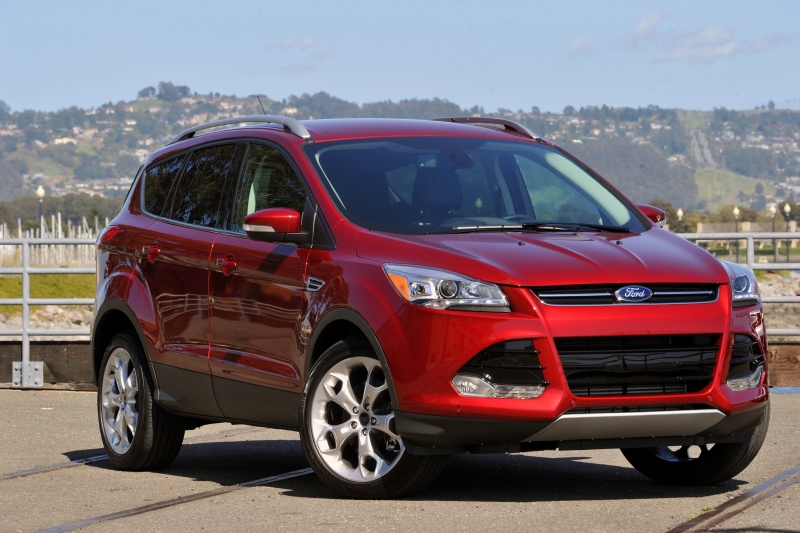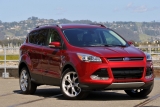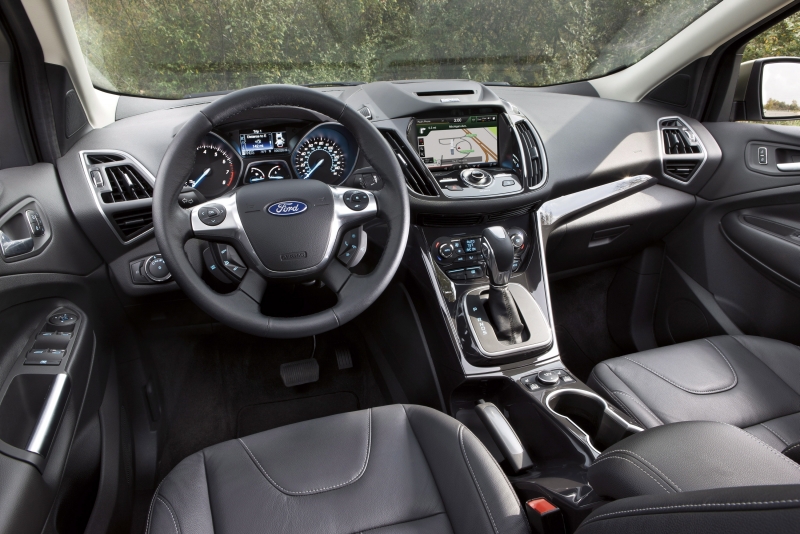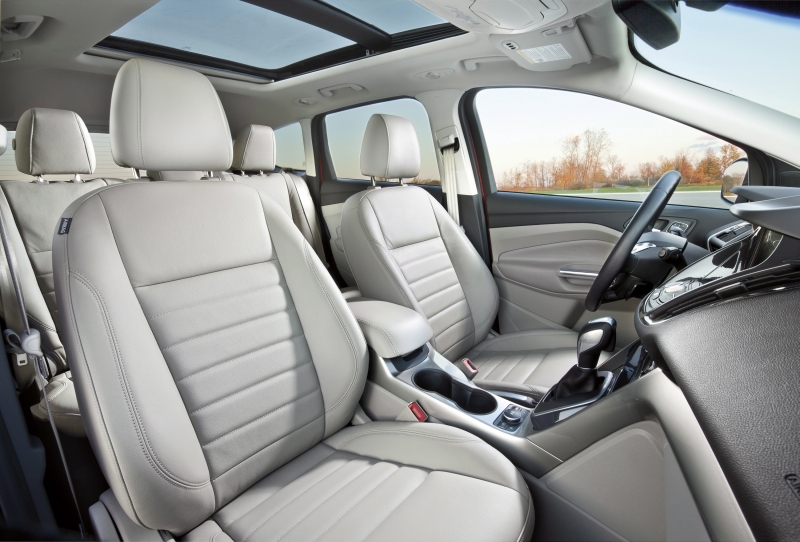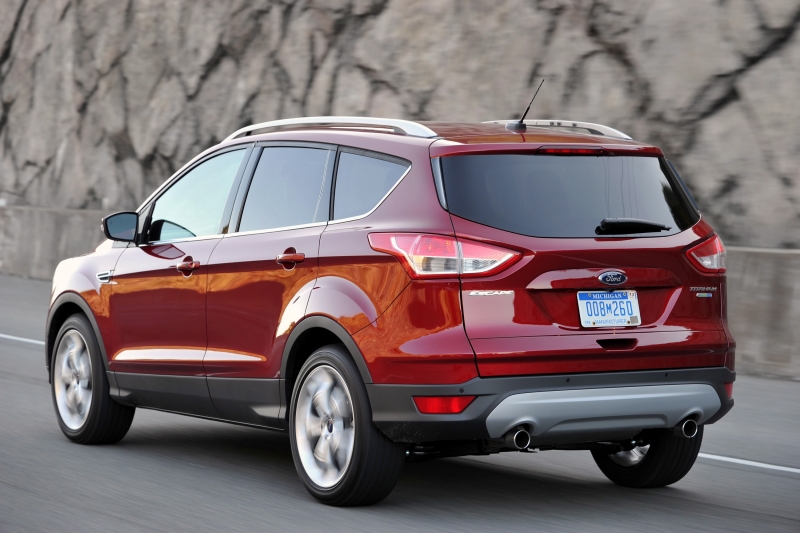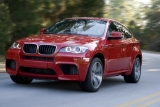Need Help?
2013 Ford Escape S FWD 4dr
Trim Info:
Front Wheel Drive, Sport Utility Vehicle, Sport Utility Vehicle - 2WD
22 mpg city / 31 mpg hwy
Other Trims
22 mpg city / 31 mpg hwy
Do you own this car?
Estimated Mileage
Miles
Estimated Mileage
Miles
Enter current mileage for most
accurate info about this vehicle
accurate info about this vehicle
Track Your Service Records
Get Recall Alerts
Get Updated Value Estimates on Your Car.
Expert Reviews
April 30, 2012 by Josh Sadlier
The 2013 Ford Escape marks an unusual automotive event: Ford’s venerable compact crossover SUV wasn’t broke, but the company went and fixed it anyway. Whereas sales typically trend downward toward the end of a vehicle’s life cycle, the outgoing first-generation Escape turned in its best performance ever for 2011, moving over a quarter-million units. The year before, the Escape wasn’t even among the top 10 best-selling vehicles; last year, it shot up to number five. Ford could have left the 2013 Escape untouched and still likely enjoyed another successful year.
But that’s not the way Ford’s rolling these days. Despite its best-selling status, you see, the outgoing first-generation Escape was a throwback, a traditional American-style crossover. That didn’t fit with the “One Ford" corporate vision, which entails single global platforms for most vehicles. With cars like the Fiesta and Focus recently receiving cosmopolitan makeovers, the aging Escape seemed increasingly out of place. That’s why Ford replaced it with a new Kuga-based, Focus-inspired model that gives the company a decidedly different presence in this segment.
There’s no doubt that the 2013 Escape is a risky product. Americans loved the no-nonsense SUV character of the previous model, but now they’re faced with a sleek new crossover that essentially looks and drives like a Focus hatchback on stilts. Still, the 2013 Escape is a vastly improved vehicle in nearly every respect, and we suspect that will shine through in the long run, whether or not it replicates its predecessor’s sales success right out of the gate.
What's to Like
The Escape’s driving dynamics are remarkably similar to those of the exceptionally satisfying Focus. Unlike many rivals these days, the Escape feels tidy and maneuverable in tight spaces, as a compact crossover should. Interior materials are excellent by segment standards. The optional MyFord Touch system adds high-tech functionality and gives the dashboard a much sleeker appearance. Two turbocharged engines are offered, and both deliver a solid combination of power and fuel economy.
The Escape’s driving dynamics are remarkably similar to those of the exceptionally satisfying Focus. Unlike many rivals these days, the Escape feels tidy and maneuverable in tight spaces, as a compact crossover should. Interior materials are excellent by segment standards. The optional MyFord Touch system adds high-tech functionality and gives the dashboard a much sleeker appearance. Two turbocharged engines are offered, and both deliver a solid combination of power and fuel economy.
What's Not to Like
The non-MyFord Touch dashboard is a bit of a mess with its button-happy layout, while MyFord Touch itself still leaves something to be desired ergonomically. We deemed road noise an issue in the 1.6-liter SE, which is bound to be a popular model. No third-row seat is offered; you’ll have to step up to the enormous Explorer or Flex for that. The new Escape looks more like a tall hatchback than a tough SUV, which may turn off some fans of the previous model’s boxy styling. Also, there’s no hybrid-powered version of the new Escape, so the old hyper-efficient Escape Hybrid is left without a successor.
The non-MyFord Touch dashboard is a bit of a mess with its button-happy layout, while MyFord Touch itself still leaves something to be desired ergonomically. We deemed road noise an issue in the 1.6-liter SE, which is bound to be a popular model. No third-row seat is offered; you’ll have to step up to the enormous Explorer or Flex for that. The new Escape looks more like a tall hatchback than a tough SUV, which may turn off some fans of the previous model’s boxy styling. Also, there’s no hybrid-powered version of the new Escape, so the old hyper-efficient Escape Hybrid is left without a successor.
Driving Impressions
The phrase “carlike handling" is profoundly overused in our profession, but there’s no question it applies to Ford’s latest crossover. Although the Escape naturally rides higher than the mechanically related Focus hatchback, you’d be hard-pressed to tell a difference in ordinary driving. Other than the Focus’s lower price and available manual transmission, there’s not much that the Escape can’t match—and the crossover offers the twin advantages of added ground clearance and available all-wheel drive. Even in spirited cornering, the Escape feels nimble and confident, evincing none of the ponderousness that plagues rivals like the Chevrolet Equinox and Honda CR-V.
The phrase “carlike handling" is profoundly overused in our profession, but there’s no question it applies to Ford’s latest crossover. Although the Escape naturally rides higher than the mechanically related Focus hatchback, you’d be hard-pressed to tell a difference in ordinary driving. Other than the Focus’s lower price and available manual transmission, there’s not much that the Escape can’t match—and the crossover offers the twin advantages of added ground clearance and available all-wheel drive. Even in spirited cornering, the Escape feels nimble and confident, evincing none of the ponderousness that plagues rivals like the Chevrolet Equinox and Honda CR-V.
Unsurprisingly, there’s a price to be paid in ride compliance. We love that Ford didn’t dumb down the European-style handling, but we’re not sure our fellow citizens will appreciate the Escape’s Euro-firm ride, especially with the 18-inch and 19-inch alloy wheels that come with the SEL and Titanium trim levels, respectively. We weren’t blown away by the new Escape’s chassis rigidity, either, as rutted pavement can induce some unseemly quivers. Road noise, too, is more pronounced than we prefer in a vehicle than touches $35,000 (gulp!) fully loaded.
Engine and Drivetrain
The 2013 Ford Escape comes with a smooth conventional six-speed automatic transmission and one of three engines. The entry-level 2.5-liter inline-four cylinder engine, available only with front-wheel drive, is rated at 168 horsepower and 170 pound-feet of torque. This carryover engine from the previous Escape is agreeable enough, but we’d recommend stepping up to one of the two twin-turbocharged “EcoBoost" inline-fours, both of which offer front- or all-wheel drive.
The 2013 Ford Escape comes with a smooth conventional six-speed automatic transmission and one of three engines. The entry-level 2.5-liter inline-four cylinder engine, available only with front-wheel drive, is rated at 168 horsepower and 170 pound-feet of torque. This carryover engine from the previous Escape is agreeable enough, but we’d recommend stepping up to one of the two twin-turbocharged “EcoBoost" inline-fours, both of which offer front- or all-wheel drive.
The midlevel EcoBoost option, a 1.6-liter four, generates up to 178 horsepower (173 with regular fuel) and 184 pound-feet of torque. We’re not fans of the 1.6-liter’s vacuum-cleaner soundtrack, but it does deliver satisfying punch along with the promise of superior fuel economy. Cost no object, the pick of the litter is unquestionably the top-of-the-line 2.0-liter version, which cranks out a genuinely engaging 240 horsepower and 270 pound-feet—and sounds good doing it. The old Escape’s V-6 will become a distant memory once you’ve given this 2.0-liter turbo the spurs.
Properly equipped, the Escape can tow up to 3,500 pounds, which is pretty good for a compact crossover that doesn’t even offer a V-6.
Green Evaluation/Gas Mileage
Even the heaviest and most powerful Escape—an all-wheel-drive model with the 2.0-liter turbo—still returns an admirable 21 mpg city/28 mpg highway and 24 mpg combined, according to the EPA. Front-wheel-drive 2.0-liter models get 22/30/25 mpg, effectively the same as the base 2.5-liter model’s 22/31/25 mpg. The 1.6-liter turbo figures to be the fuel-economy champ, with highway figures well into the 30s. The 1.6-liter turbo is the fuel-economy champ, yielding up to 33 mpg on the highway. If saving at the pump is a concern, the 2013 Escape’s got you covered.
Even the heaviest and most powerful Escape—an all-wheel-drive model with the 2.0-liter turbo—still returns an admirable 21 mpg city/28 mpg highway and 24 mpg combined, according to the EPA. Front-wheel-drive 2.0-liter models get 22/30/25 mpg, effectively the same as the base 2.5-liter model’s 22/31/25 mpg. The 1.6-liter turbo figures to be the fuel-economy champ, with highway figures well into the 30s. The 1.6-liter turbo is the fuel-economy champ, yielding up to 33 mpg on the highway. If saving at the pump is a concern, the 2013 Escape’s got you covered.
Vehicle Details
Features and Technology
While it’s possible to get a stripped-down Escape without the Sync voice-recognition system, you’ll have to work hard to find one. Offered on the base Escape S model for a mere $295, Sync is certainly a worthwhile upgrade, enabling control of both your phone and your connected audio device via simple voice commands. Other Sync specialties include three free years of turn-by-turn directions, a 911 Assist feature that can call 911 automatically in an emergency, and even a new technology that allows incoming text messages to be “read" by a digitized voice through the audio system’s speakers.
While it’s possible to get a stripped-down Escape without the Sync voice-recognition system, you’ll have to work hard to find one. Offered on the base Escape S model for a mere $295, Sync is certainly a worthwhile upgrade, enabling control of both your phone and your connected audio device via simple voice commands. Other Sync specialties include three free years of turn-by-turn directions, a 911 Assist feature that can call 911 automatically in an emergency, and even a new technology that allows incoming text messages to be “read" by a digitized voice through the audio system’s speakers.
If you want more technology, higher trim levels are eligible for the MyFord Touch system, which has received numerous improvements as of late. Feature highlights include an eight-inch central touch screen, a 4.2-inch customizable information display in the gauge cluster, twin USB ports, and even WiFi hotspot functionality if you’ve got a USB mobile broadband adapter. Early glitches tarnished the public image of MyFord Touch, but Ford has begun to make amends with the latest software, which boasts larger text and simpler displays.
Interior
Like the Focus, the Escape offers two very different dashboards depending on whether MyFord Touch is specified. On more basic models, the dashboard has a rakish central panel that’s covered with similar-looking buttons, including an odd numerical keypad. We find the overall look to be a bit chintzy, which is a shame, as materials quality is so high that even Volkswagen has cause for concern. Step up to MyFord Touch, however, and you’ll feel like you’re driving the future. From the high-resolution eight-inch touchscreen to the revised dashboard with piano-black trim, the MyFord Touch Escape has got a very cool vibe inside.
Like the Focus, the Escape offers two very different dashboards depending on whether MyFord Touch is specified. On more basic models, the dashboard has a rakish central panel that’s covered with similar-looking buttons, including an odd numerical keypad. We find the overall look to be a bit chintzy, which is a shame, as materials quality is so high that even Volkswagen has cause for concern. Step up to MyFord Touch, however, and you’ll feel like you’re driving the future. From the high-resolution eight-inch touchscreen to the revised dashboard with piano-black trim, the MyFord Touch Escape has got a very cool vibe inside.
As for passenger comfort, well, if you sample the Escape’s rear quarters back-to-back with, say, the CR-V’s or the Subaru Forester’s, you’ll find that the Ford comes up a bit short. Also, a third-row seat is unavailable, so the Kia Sorento and Toyota RAV4 have an advantage here. We doubt many shoppers will be disappointed with the Escape’s backseat, but it’s hardly the largest of its ilk. In this respect, the Escape is more on par with smaller rivals like the Kia Sportage.
Exterior
Whereas the old Escape looked like an SUV, this new one looks like a muscle-bound Focus. It’s rather like Subaru’s Outback models, which are raised, utility-themed versions of normal hatchbacks and wagons. We also see a lot of RAV4 in the Escape’s greenhouse and headlights. While it remains to be seen whether Escape loyalists will embrace this new stylistic direction, fans of more carlike compact crossovers will find plenty to like about Ford’s latest.
Whereas the old Escape looked like an SUV, this new one looks like a muscle-bound Focus. It’s rather like Subaru’s Outback models, which are raised, utility-themed versions of normal hatchbacks and wagons. We also see a lot of RAV4 in the Escape’s greenhouse and headlights. While it remains to be seen whether Escape loyalists will embrace this new stylistic direction, fans of more carlike compact crossovers will find plenty to like about Ford’s latest.
Market Segment and Pricing
As the only compact crossover to crack the top 10 in sales for 2011, the Escape was already the boss in this segment, but the new model competes more directly against car-based alternatives like the CR-V and the Mazda CX-5. Despite all the improvements, pricing hasn’t changed much from last year; still, given that you can get a Sorento V6 or a RAV4 V6 for around $25,000, we’re disappointed that the 2.0-liter EcoBoost Escape costs a couple grand more at a minimum.
As the only compact crossover to crack the top 10 in sales for 2011, the Escape was already the boss in this segment, but the new model competes more directly against car-based alternatives like the CR-V and the Mazda CX-5. Despite all the improvements, pricing hasn’t changed much from last year; still, given that you can get a Sorento V6 or a RAV4 V6 for around $25,000, we’re disappointed that the 2.0-liter EcoBoost Escape costs a couple grand more at a minimum.
What We Think
The 2013 Ford Escape is good on gas, great to drive, and packed with technology. What’s not to like? We do blanch a bit at the Escape’s high price-potential—there are better things to spend $30,000-plus on—but in the $25,000-28,000 range, this Ford is a very strong contender.
The 2013 Ford Escape is good on gas, great to drive, and packed with technology. What’s not to like? We do blanch a bit at the Escape’s high price-potential—there are better things to spend $30,000-plus on—but in the $25,000-28,000 range, this Ford is a very strong contender.
|
|
Similar Articles
Your Local Mechanics


